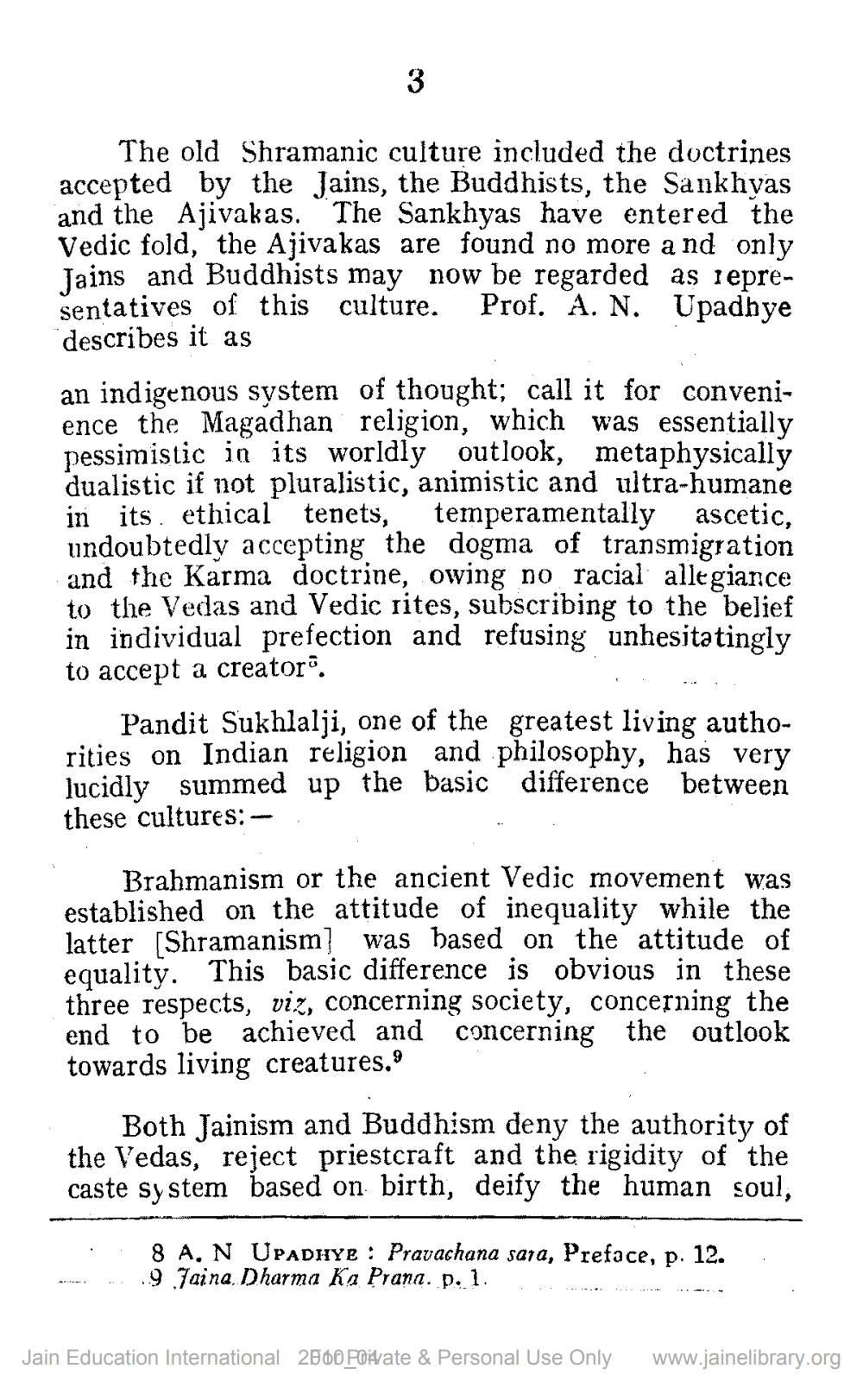Book Title: Fundamental of Jainism Author(s): Prithviraj Jain Publisher: Prithviraj Jain View full book textPage 5
________________ 3 The old Shramanic culture included the doctrines accepted by the Jains, the Buddhists, the Sankhyas and the Ajivakas. The Sankhyas have entered the Vedic fold, the Ajivakas are found no more and only Jains and Buddhists may now be regarded as representatives of this culture. Prof. A. N. Upadhye describes it as an indigenous system of thought; call it for convenience the Magadhan religion, which was essentially pessimistic in its worldly outlook, metaphysically dualistic if not pluralistic, animistic and ultra-humane in its ethical tenets, temperamentally ascetic, undoubtedly accepting the dogma of transmigration and the Karma doctrine, owing no racial allegiance to the Vedas and Vedic rites, subscribing to the belief in individual prefection and refusing unhesitatingly to accept a creator". Pandit Sukhlalji, one of the greatest living authorities on Indian religion and philosophy, has very lucidly summed up the basic difference between these cultures: - Brahmanism or the ancient Vedic movement was established on the attitude of inequality while the latter [Shramanism] was based on the attitude of equality. This basic difference is obvious in these three respects, viz, concerning society, concerning the end to be achieved and concerning the outlook towards living creatures." Both Jainism and Buddhism deny the authority of the Vedas, reject priestcraft and the rigidity of the caste system based on birth, deify the human soul, 8 A. N UPADHYE: Pravachana sara, Preface, p. 12. 9 Jaina Dharma Ka Prana. p. 1. Jain Education International 2560 Povate & Personal Use Only www.jainelibrary.orgPage Navigation
1 ... 3 4 5 6 7 8 9 10 11 12 13 14 15 16 17 18 19 20
